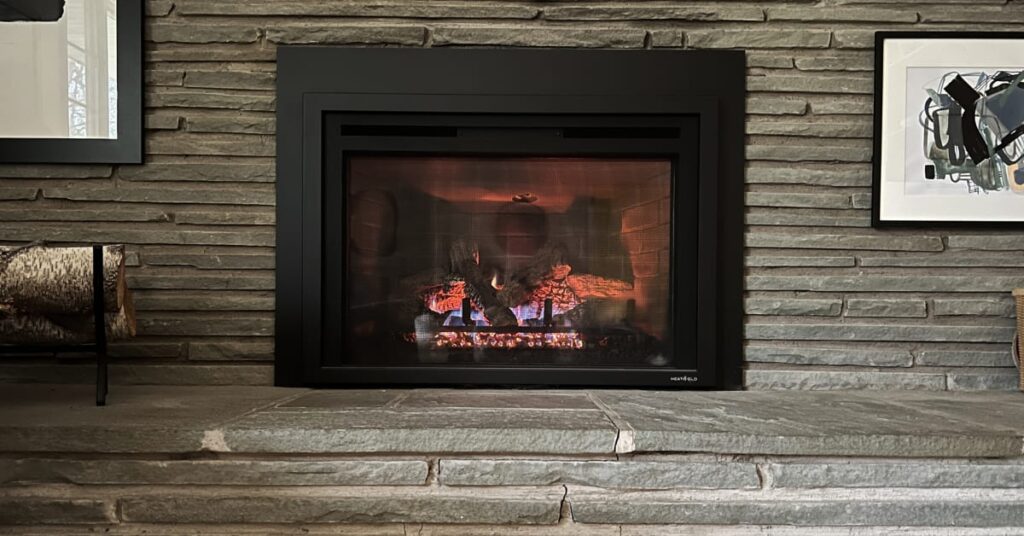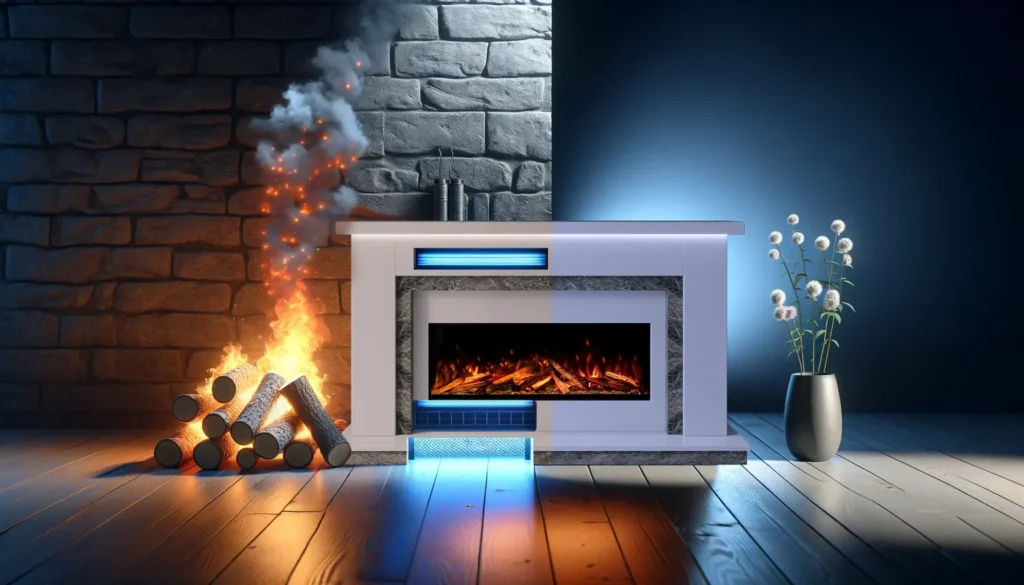Blog
Electric vs Gas Fireplaces – Which One is Right for You?
Choosing between an electric fireplace and a gas fireplace can be a tough decision, as both options offer unique benefits and features. Whether you’re prioritizing aesthetics, energy efficiency, ease of use, or heating capabilities, understanding the differences between these two popular types of fireplaces will help you make the best choice for your home.
In this guide, we’ll explore the key features, pros and cons, and suitability of electric fireplaces and gas fireplaces, so you can determine which one is right for you.
What is an Electric Fireplace?
An electric fireplace uses LED technology to simulate the look of flames and often includes a built-in heater to provide warmth. These fireplaces are plug-and-play, making them an easy and versatile option for any space.

Key Features:
- Requires only an electrical outlet for operation.
- Provides customizable flame effects with or without heat.
- Available in wall-mounted, freestanding, recessed, and TV stand models.
What is a Gas Fireplace?
A gas fireplace uses natural gas or propane to produce real flames, providing a more traditional fireplace experience. It requires a gas line connection and may use a vent or operate vent-free.
Key Features:
- Offers realistic flames and efficient heating.
- Available in vented or ventless configurations.
- Comes in built-in, insert, or freestanding designs.
Electric Fireplaces: Pros and Cons
Pros:
- Easy Installation:
- No venting, gas line, or chimney required—just plug it in and enjoy.
- Cost-Effective:
- Lower upfront cost compared to gas fireplaces.
- Versatile Designs:
- Available in various styles, including wall-mounted, recessed, and TV stand models.
- Safe for Families:
- No open flames or emissions, making them ideal for homes with kids or pets.
- Year-Round Use:
- Flame effects can operate without heat, allowing for ambiance in any season.
Cons:
- Limited Heat Output:
- Best for supplemental heating in small to medium-sized rooms.
- Less Realistic Flames:
- LED flames are attractive but may not replicate the authenticity of real fire.
- Dependent on Electricity:
- Won’t operate during a power outage.
Gas Fireplaces: Pros and Cons

Pros:
- Real Flames:
- Produces realistic flames and warmth, replicating the traditional fireplace experience.
- Efficient Heating:
- Provides more heat output than electric fireplaces, suitable for larger spaces.
- Convenient Operation:
- Offers instant warmth with remote control or wall switch options.
- Energy Independence:
- Can operate during power outages (if manually ignited).
Cons:
- Higher Installation Costs:
- Requires a gas line and, in some cases, venting or chimney installation.
- Less Portable:
- Fixed installations limit flexibility for relocation.
- Maintenance Needs:
- Requires regular servicing to ensure safe and efficient operation.
- Emissions:
- Ventless models may release small amounts of carbon monoxide, requiring good ventilation.
Comparing Electric and Gas Fireplaces
| Feature | Electric Fireplace | Gas Fireplace |
|---|---|---|
| Installation | Plug-and-play, no venting required | Requires gas line, venting (for vented models) |
| Heat Output | Best for small to medium rooms | Suitable for larger spaces |
| Flame Realism | LED flame effects | Real flames with natural flickering |
| Operating Costs | Lower (electricity) | Moderate (natural gas or propane) |
| Maintenance | Minimal maintenance required | Regular servicing needed |
| Safety | No emissions or open flames | Ventless models may produce small emissions |
| Versatility | Usable with or without heat | Provides heat whenever flames are on |
| Price Range | $100–$1,500 | $1,000–$5,000 (including installation) |
Which One is Right for You?
Choose an Electric Fireplace If:
- You want a cost-effective and low-maintenance option.
- You’re looking for a versatile design that’s easy to install in any room.
- Your priority is creating ambiance with customizable flame effects.
- You live in a small or medium-sized space and don’t need high heat output.
- You rent your home or prefer a fireplace you can move with ease.
Choose a Gas Fireplace If:
- You desire realistic flames and higher heat output for larger spaces.
- You want a traditional fireplace experience with modern convenience.
- Your home already has access to a gas line or you’re willing to invest in one.
- You want a heating source that operates even during power outages.
- You’re okay with regular maintenance and higher upfront costs.
Popular Models: Electric and Gas Fireplaces
Top Electric Fireplaces:
- R.W. Flame Wall-Mounted Electric Fireplace
- Sleek, modern design with adjustable flame colors and heat.
- Turbro Suburbs TS23 Electric Fireplace Stove
- Compact and freestanding, perfect for smaller spaces.
- Touchstone Sideline Recessed Electric Fireplace
- Built-in design for a high-end look.
Top Gas Fireplaces:
- Napoleon Ascent Series Gas Fireplace
- Versatile design with vented and vent-free options.
- Heat & Glo Slimline Gas Fireplace
- Offers a minimalist design with high heat output.
- Empire Tahoe Deluxe Gas Fireplace
- Traditional look with efficient heating for larger spaces.
Conclusion
Both electric and gas fireplaces have unique advantages that make them suitable for different lifestyles, budgets, and home setups. Electric fireplaces are perfect for those who prioritize affordability, versatility, and ease of use, while gas fireplaces are ideal for those seeking realism, higher heat output, and a more traditional experience.
Consider your heating needs, style preferences, and installation requirements to choose the perfect fireplace for your home. Shop now and enjoy the warmth and ambiance of a fireplace tailored to your needs!


